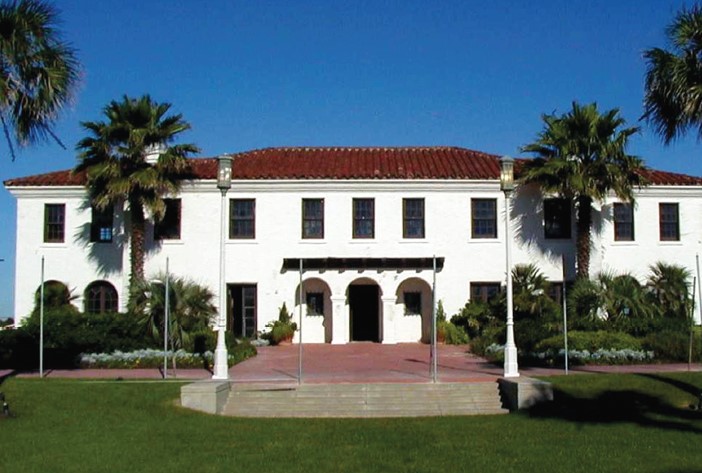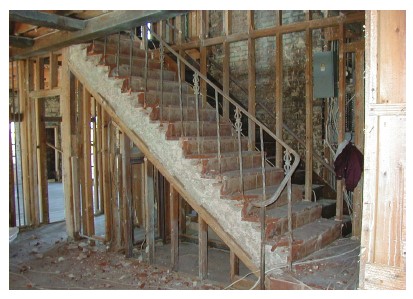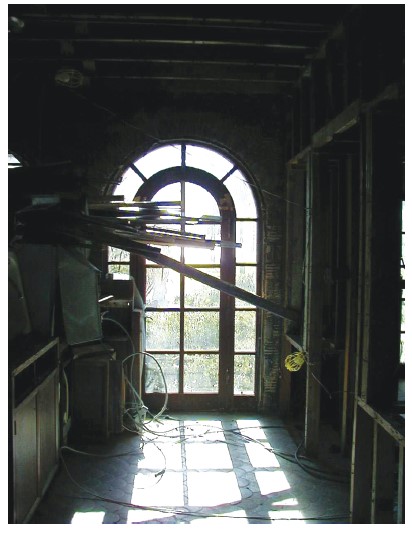Tourists and locals visit the seawall every day to take in the sights: waves crashing onto the beach, an array of restaurants, busy souvenir shops, and grand hotels. But at one point in time, a Spanish Colonial Revival style mansion also graced a prominent spot on the popular thoroughfare.
The home belonged to George Sealy II (1880-1944). One of eight children born in Galveston to George and Magnolia Willis Sealy, he was a graduate of Ball High School and Princeton University. During World War I, Sealy served as president of the local Red Cross and chaired Liberty Loan drives as well as the American Protective League. He enlisted as a private in the army in October 1918 out of a sense of duty and following his father’s example, never cashed his service paychecks. Not that he needed the money.

Besides a receiving a sizable inheritance, Sealy was a hard-working and successful businessman. He served as chairman of the board of Hutchings-Sealy Bank and International Creosoting and Construction Company, Inc.; president of the Galveston Cotton Concentration Company, Black Hardware Company, Gulf Transfer Company, and Bay Cotton and Bagging Company; vice president of American Indemnity; treasurer of the Galveston Cotton Exchange and Board of Trade; treasurer of the Sealy-Smith Foundation for John Sealy Hospital and Galveston Orphans' Home; and commissioner of finance for the City of Galveston (an elected position).
He was also a member of the board of directors of the Gulf, Colorado and Santa Fe Railway, the British and Allied Merchant Navy Club, and the State Prison Board.
In addition to his keen business sense, Sealy had an eye for the beauty of nature. His mother Magnolia Willis Sealy was a pioneer in oleander cultivation. An avid horticulturist himself, George Sealy Jr. classified numerous existing varieties and developed over 60 new ones.
He and members of his family were involved with the massive planting of the flowering shrub on public and commercial properties in the early 20th century that played a vital part in Galveston’s new nickname as the “Oleander City.” The oleander garden on the grounds of Open Gates, his impressive childhood home, is dedicated to his memory.
Sealy did not marry until late in life and when he did it was to a much younger woman, just as his father had. On November 10, 1923, Sealy married twenty-two-year-old Eugenia Polk Taylor (1901-1980) of San Antonio, Texas. The couple had three children: Eugenia Taylor (born 1925), George III (born 1927) and Lane Taylor (born 1929).
For his new home on the seawall, Sealy decided to replicate the Mediterranean charm of his previous home (known today as Stewart Mansion) but on a much grander scale. In 1931, he hired well-known architect and native Texan Cameron Fairchild for the job. His firm Cameron Fairchild & Associates worked primarily in Houston and Galveston.
Their commissions included institutional buildings as well as residences in the affluent River Oaks District of Houston and Galveston’s Denver Court. Examples of Fairchild’s Galveston homes remain today at 1616 Broadway, 4804 Crockett Boulevard, and 24 Cedar Lawn Drive.
A refreshing change from some of the more ostentatious mansions on the island at the time, the Sealy’s new home featured a crisp, white interior with red tiled floors and staircase, wrought iron railings, high ceilings, and open spaces. The design was equally appropriate for the family’s opulent parties as well as casual gatherings with friends and everyday family life with small children.
 Surrounded by palm trees, the exterior of the mansion featured classical Mediterranean-inspired elements of arched windows and doorways, white washed stucco finishes, heavy stone balustrade fences, and a red-tiled roof. A red-tiled front porch stretched out to steps leading to an expansive front lawn facing the seawall, and a simple brick path led to the street.
Surrounded by palm trees, the exterior of the mansion featured classical Mediterranean-inspired elements of arched windows and doorways, white washed stucco finishes, heavy stone balustrade fences, and a red-tiled roof. A red-tiled front porch stretched out to steps leading to an expansive front lawn facing the seawall, and a simple brick path led to the street.
George Sealy II died on November 4, 1944, as a result of contracting pneumonia while attending a meeting in New York and enrolling his son George Sealy III in Princeton University. His wife Eugene soon moved to San Antonio to be closer to her parents.
The Sealy mansion belonged to a series of owners after leaving the family holdings. In the early 1980s it was used as the El Mina Shrine Temple, and was later subdivided in the Sweetwater Condominiums.
The front lawn of the seawall home sparkled with 30,000 blue lights on a 41-foot spruce Christmas tree in November 2001 to celebrate the coming holidays. Unfortunately, the home itself would not last long enough to see Christmas.
In 2001, the Galveston Historical Foundation asked the property’s new owner Tilman Fertitta, chairman, president, and chief executive officer of Landry’s Restaurants, not to demolish the 70-year-old mansion. Unfortunately, the land held more value as commercial property at the time than the home itself.
 According to the Galveston Daily News, Fertitta described the villa as “four plaster walls and a red roof.” Moving the home was briefly discussed, but the undertaking was deemed to be too expensive.
According to the Galveston Daily News, Fertitta described the villa as “four plaster walls and a red roof.” Moving the home was briefly discussed, but the undertaking was deemed to be too expensive.
On December 20, 2001, the home was demolished to make way for the Rainforest Café, a jungle themed restaurant and tourist attraction. The Sealy family still plays an important role on the island both in business and philanthropy.